Black Sea giant
According to the well-known facts from the practice of world-wide sea-based aircraft construction, dvuhlozdochny apparatuses were not particularly popular. The reason for this is the complex resolution of issues of hydrodynamics and seaworthiness when landing on a large wave, the need for a significant strengthening of the structure connecting the two hulls (in case of landing on one boat). The operation of such a flying catamaran reveals a number of additional difficulties and an increased number of members of the ground launch team. It is also better for the crew servicing a heavy sea machine to be together: there are more chances to eliminate the malfunction in a short time, to help the comrade in a difficult moment, and just to escape in an emergency.
However, despite the indicated negative aspects, the two-boat scheme has indisputable advantages: the possibility of hanging around the center section of a large assortment of bombing or torpedo weapons and providing almost circular shelling from on-board defensive installations. These latter circumstances led to the fact that the planes of such a scheme were still built.
The most well-known among the mentioned constructions and the only one built serially is the Italian two-boat seaplane Savoy Marchetti S.55, designed by Alessandro Marchetti in 1922. Designed to serve as a torpedo plane, the S.55 became famous primarily for the number of flights undertaken by the Italians in 1920 years In 1929, a squadron of such machines under the command of Colonel Balbo visited Odessa, where S.55 was clearly demonstrated to Soviet aviation specialists. The result of the demonstration and the relevant negotiations was the purchase of six S.1932 in 55 by the Soviet Union, five of which were later operated on the Far Eastern lines of the Civil Air Fleet.
Perhaps the appearance of the S.55 excited additional interest in flying catamarans. And not only to flying. In the first half of the 1930-ies, the project of the combat and passenger catamaran was developed in a special design bureau of P.Grokhovsky, the original combat apparatus was built at the Sevastopol aircraft plant number 45 (known as the glider of the 45-th plant). After testing an experienced two-boat 16-local glider A-13, in 1936, the development of the giant CIG-101 catamaran-glider, carrying a 150 man, was carried out. Designed by the engineer VAGartwig, ZIG-101 was intended for high-speed service of the Sochi-Sukhumi line. Its “aircraft” component was that the aircraft plant №101 was to build the ZIG-1.
As for the two-boat seaplanes directly, the situation with them in the Soviet Union was as follows. Back in 1925-26. Designer DP Grigorovich developed the design of the naval destroyer MM1 according to this scheme, in 1930, the designer R.L.Bartini proposed the design of a two-wheeled MTB-2, and in 1934, the TsAGI built a giant MK-1. There was also a non-military device implemented. In 1935, a two-passenger passenger ASA amphibian (northern amphibian) was built and successfully tested according to a project by Leningrad designers. The plane flew to 1937 g., In the series was not built.
Of all of the above, we dwell in more detail on three works: the MMI and MTB-2 projects, built and tested by the MK-1.
Marine ship MMI
The MMI project was developed in 1925-26. D.P. Grigorovich after his appointment as Head of the Department of Maritime Pilot Aircraft Building based on GAZ No. XXUMX in Leningrad. The aircraft was intended for military service as a torpedo carrier armed with a single 3-mm torpedo.
Simplistically, an MMI can be defined as an oversized floatplane in which float boats are covered with an elliptical wing, in order to provide additional rigidity with supporting struts. Machine gun turrets, which provide for almost circular shelling of the front and rear hemispheres, are located in the bow and stern parts of the boats.
The tail part is connected to the wing by two flat beams, which become double vertical plumage.
Cockpit in the center, in the thickened part of the wing. Two engines "Lorrain-Dietrich" horsepower 450 - pulling and pushing - on the struts, almost over the cockpit.
In its present form, the MMI project did not evoke unanimous approval, therefore, in 1926, the catamaran was transformed into a completely ordinary two-float biplane MM-2. This unit, also oriented to the Lorrain-Dietrich engine, had very simple contours: wings and a feathering of a rectangular shape, a box-section fuselage. In addition to the nose and middle turret there was also a machine gun point for firing down and back. The torpedo was located under the fuselage.
Then came the MM-3 project. later renamed MT-1 (MT1-2LD 450). He was a flying biplane boat with engines between the wings. The only torpedo was hung under the wing, next to the board. The design was stopped at the stage of detailed study.
Thus, in the second half of 1920, the two-toy scheme in Soviet designs turned out to be only a particular episode among other unrealized projects.
MMI Project Master Data
Swipe (m) ..., ...................... 27,4
Length (m) ............................ 18,4
Height (m) ............................ 5,0
Wing area (m3) .................. 116,4
Engine power (hp) .......... 2 x 450
Maximum speed (km / h) ......... 160
Armament: ................ 4 turrets TUR-5
with machine gun sparks YES caliber 7,62 mm, 1 torpedo cal. 450-mm, 790-900 kg
MTB-2 (Sea heavy bomber-second) project of the plant 22
Developed by R.L.Bartini in 1929-30 in accordance with the TTT to the “Heavy naval torpedo bomber MTB-2 of a boat-type metal structure under the 6 of M-34 motors with a total power of 5000 hp”
The purpose of the aircraft was determined as
Application Method -
The sequence of requirements for the degree of their importance is quite in the spirit of the time: payload, range, fire "independence" (ie, spherical shelling), seaworthiness, and, lastly, the horizontal speed.
Bomb load up to 3200 kg, crew up to 10 people. The dumped cargo consisted of various combinations of bombs caliber 100, 250, 500. 1000 and 2000 kg. Requirements specifically stipulated the placement of bombs in caliber up to 250 kg inside the boat in cassettes, with dropping through hatches in the bottom or sides of the boat. In addition, “instead of the bomb load, the location of the special drop load must be provided, the weight of each object in 1000, 1600, 2000 kg. The installation of these cargoes must be coordinated with the Ostechbureau. ”
The defense armament of the MTB-2 consisted of an automatic 20-37 caliber mm cannon on the nose turret, DA gunpieces on the rear turret and another YES in the tail turret. In the transshipment variant, two retractable turret installations were added - on the right and on the left wing, with one YES each.
MTB-2 under normal load should have the following flight data: horizontal speed of at least 200 km / h at a height of 3000 m at rated engine power.
Flight range 2400 km at a combat altitude of 3000 m at maximum operating speed of 0,8.
Landing speed - no more than 100 km / h. Take-off time - no more than 40 seconds. Allowable planning angle of at least 20 deg. The possibility of continuing the flight with one or even two stopped engines was specifically mentioned.
Basic data of the project MTB-2 (1930)
Swipe (m) .................................... 53,0
Length (m) ..................................... 31,0
Height (m) ..................................... 9,0
Empty weight (kg) .............................. 23500
Combat load weight (kg) ........................ 4940
Fuel weight (kg) ...................... 10000 -12300
Takeoff weight (kg) ............................. 40000
Wing area (sqm) .......................... 372,1
Engines (HP) .......................... 4800-6000
Alignment,% ................................... 33
Armament: ............. Guns in bow installations, 2x37 mm, machine guns YES (4-6 spars) 8-12x7,62 mm Maximum bomb load up to 6000 kg (torpedoes: 4-6X1000 kg, bomb : 2x2000 kg, 5x1000 kg - under the center section, in cassettes: 10x500 kg, 20x250 kg, 50x100 kg)
Interestingly, the indicative layout of the crew of the MTB-2 was presented in the form of an ordinary single-submarine monoplane. The choice of a scheme with two boats appeared in connection with the requirements of Ostechbureau for the suspension of large-sized suspensions; one of the options was a radio-controlled boat that was discharged (detached after landing on the water).
In the final form, the project of RL Bartini was proposed in 1930 as the development of aircraft factory No. XXUMX. In many respects, in terms of its size and purpose, it is similar to Tsagovsky MK-22 (ANT-1) that appeared later. The question whether further elaboration and construction of MTB-22 was possible can be answered in the negative and for good reason. In order to achieve the construction of such a huge aircraft, at first it was necessary to “germinate” in the aircraft industry. Organize your design bureau, achieve a production base (that is, gain a foothold at any aircraft factory), prove yourself successful in implementing smaller designs, enlist the support of any of the Soviet bonzes. R.L.Bartini, after several years of service in aviation on the Black Sea, by the time being described, only recently appeared in Moscow (although he worked here before the Black Sea trip). In 2, he did not have either sufficient connections or capabilities.
Another thing A.N.Tupolev. Its main merit was not even the construction of aircraft, but the creation of a powerful, efficient team and its own economy in the form of pilot production, etc. Step by step, the design department of TsAGI increased its capabilities and, accordingly, built increasingly large and labor-intensive aircraft. Another matter is their necessity. Well, about this some other time, back to the double flying boats.
MK-1 (ANT-22)
The two-boat giant ANT-22 seaplane became the third flying boat designed and built at TsAGI. Its predecessors were the twin-engine ANT-8 (MDR-2) in 1930 and the three-engine ANT-27 (MDR-4) in 1934 G. 1932, by the I.Pogossky design group, in the 1933 invar, which received the status of a separate brigade No. 2 as part of the TsAGI experimental aircraft design sector. According to the task, the aircraft was defined as a sea cruiser, the purpose of which was the reconnaissance of remote areas of the high seas, escort fleet, bombardment of bases and fortified areas of the enemy. That is, the MK-1 was designed to solve the whole complex of tasks that were previously assigned to various long-range sea reconnaissance planes, bombers and torpedo bombers that were being designed and built. The choice of the two-boat scheme was originally determined by additional intended tasks — transporting large-sized cargoes, for example, sabotage means in the form of small submarines or semi-loaded torpedo boats.
The design of the MK-1 is completely metal, used by TsAGI in other structures: a power set of steel tubular elements, reinforcing a set of duralumin profiles, wing plating and tailings are corrugated.
The wing is four-spar, free-carrying, like TB-3, but of increased size. In the upper part of the center section, on special pylons (in the plane of the longitudinal axis of the center section and the axis of each boat) there are three tandem installations of M-34 engines. The propellers are wooden, two-bladed, of the same diameter - 4,2м. The pitch of the 3,33 m. Propelling screws, the pitch of the pusher a little more - the 3,96 m. The total power of the power plant, according to the report on the 4950 HP test (6 x 825 hp). Fuel in four gas tanks with a total capacity of 9500 liters, oil 1530 liters.
The boats are interchangeable, in the lower part they are significantly broadened, up to the 2 of the redan. This lower part, which simply can be called a “shoe”, had a waterproof deck with large hatches for inspection at the junction with the upper part. All the seams of these two uninhabited (i.e., for something not used anymore) sealed “shoes” are made on minium diluted on polymerized oil. The upper part of the boats, connected by the center section, is, in fact, very roomy fuselages, equipped with entrance doors for the crew in the bow area. Each boat has anchors, winches for their lifting, pumps (alvelers) for pumping out water. Within the broadened part, each boat could move freely, except the one through the center-section it was possible to penetrate from the left hull to the right and vice versa. In the right boat in the bow is equipped with a heavy shielded turret with a gun "Oerlikon", immediately behind the shooter is the place of the radio operator. The middle defense system is a screened turret TUR-8 with a ShKAS machine gun. In the left boat, on the contrary, - ahead of LUKAC, and in the center "Oerlikon". The stern installations are represented by two sparks of machine guns YES on the turrets TUR-5.
The flight crew consisted of 4-x people (the entire crew of 10-12 people): two pilots, the captain of the ship (the commander of the flying cruiser sounds like!) And the navigator. It was placed in the middle of the center in a special cabin called a "limousine". The pilots were located nearby, the navigator sat in front, and behind them, on a special elevation, called the bridge, was the commander. The limousine had an emergency hatch in the upper part, and a powerful searchlight in the lower front part. In addition, there was a place in the center section for a mechanic who serviced the engine installations and a toilet for the crew.
Vertical tail is a continuation of the hulls of boats. In the lower part it is connected by a narrow fixed stabilizer, in the upper part by a mobile stabilizer sheathed in canvas.
Bomber weapons include CD-2 cassettes in 8-m bomb compartments, located in the center section between the 2-m and 3-spars. On the external suspension 6 bombs but 1000kg, or 12 at 500 KG., Or 20 at 250 kg., Or 4 torpedoes.
The aircraft is equipped with a coherent radio station 11SK-1. radio station 13-PS for driving on beacons, intercom SPU-7, planned camera AFA-13 (under the bridge of the commander) and two aerial cameras AFA-15 for perspective shooting, placed on turret installations.
General characteristics of the MK-1
Wingspan (m) ......................... 51.0
Full length (m) ......................... 24,1
Flight line altitude (m) .................. 8,95
Wing area (m2) ...................... 304,0
Empty weight (kg) ......................... 21748
Flight weight (kg) ....................... 29000
The construction of the MK-1 seaplane was carried out in the spacious workshops of the TsAGI experimental design plant (ZOK TsAGI). This new and very large aircraft factory, built almost in the center of Moscow, on the Radio Street behind the COSOC building, in a valley along the bend of the Yauza River, 1 of January 1932 was commissioned (from the middle of 1937, aircraft plant No. XXUMX). At the beginning of 136, the manufacture of MDR-1934 (ANT-4) was finished here, and by the middle of the year, MK-27. 1 April 15, while trying to make the first takeoff, the MDR-1934 crashed, so the preparation for the tests of the MK-4 was carried out very carefully. The brigade commander I.Pogossky died in the crash. After him, the brigade No. 1 and the refinement of the two-boat giant were headed by AP Golubkov.
Factory tests of MK-1 began on 8 on August 1934 and continued until 8 on May 1935. Flew T.V.Ryabenko and D.N.Ilyinsky. The overall assessment of the aircraft during the 31,5% flight alignment was fully in line with the norms; there was some lag on the controls when the 34,8-35% were centered by the pilots. In terms of flight sensations, it was stated: “The controllability of the aircraft with various combinations of engine performance should be considered good.” The maximum speed at the surface of the water was 233 km / h, at the height of 3000 m - 207 km / h. A practical 3500 ceiling, the aircraft gained in 57 minutes, the turn was 82-89 seconds.
Later, the aircraft was equipped with a standard set of equipment and weapons, after which the MK-1 in the 27 period of July through 15 in August and 1935 p passed a full cycle of state tests. With external sling, the data decreased slightly: the maximum speed at the surface of the water was 205 km / h, cruising 180 km / h, practical ceiling - 2250 m.
It was recognized that in its seaworthy qualities, the MK-1 has good contours and hydrodynamics, is able to take off and land in the open sea with a wave up to 1,5 meters and winds up to 12 m / s. At the same time, indicators of speed, ceiling and flight range (1330 km) do not meet the requirements of time. It was proposed to continue to improve the aircraft, for which to install more powerful engines M-34 PH or M-34FRN.
However, in the middle of 1935, interest in the MK-1 waned. It seems that the reason for this was not only the new tactical and technical requirements for combat seaplanes, but also the reasons for exclusively practical use. For servicing such a colossus, a large number of technical equipment and ground personnel were required. The preparation for the flight and its very support turned out to be too complicated and long-term. For a combat aircraft, such indicators could not be acceptable, therefore the fleet command did not express its interest in the further development of the Black Sea giant.
MK-1 flew to 1937 g. It is not known whether it conducted experiments with the transportation of small, "semi-submarine" boats. However, the enthusiasm for the record aircraft did not pass. 8 December 1936. Pilots T.V. Ryabenko and D.N. Ilyinsky reached 1942 m in height with a load of 10400. In the next flight, it was possible to lift the maximum load 13000 kg.
In 1938, the TsAGI carried out studies of a four-engined two-boat seaplane with a take-off weight of 54 t. A special feature of this project was the asymmetrical cross-section of the boats, which allowed to reduce splash formation during take-off. The work remained in the category of experimental studies.
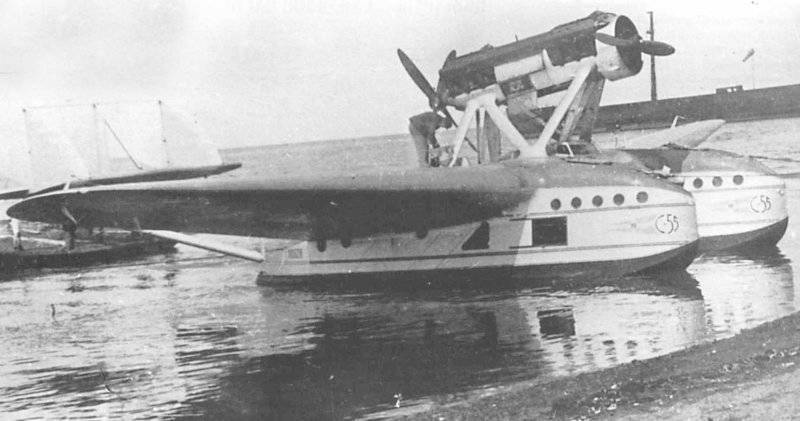
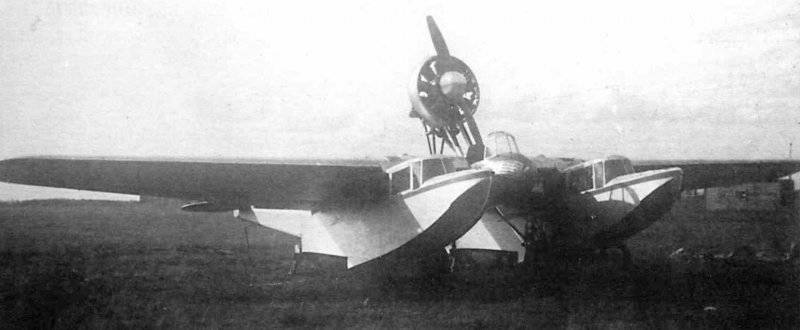
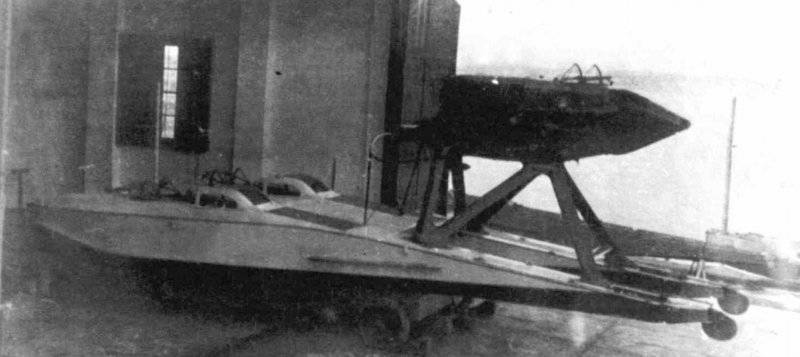
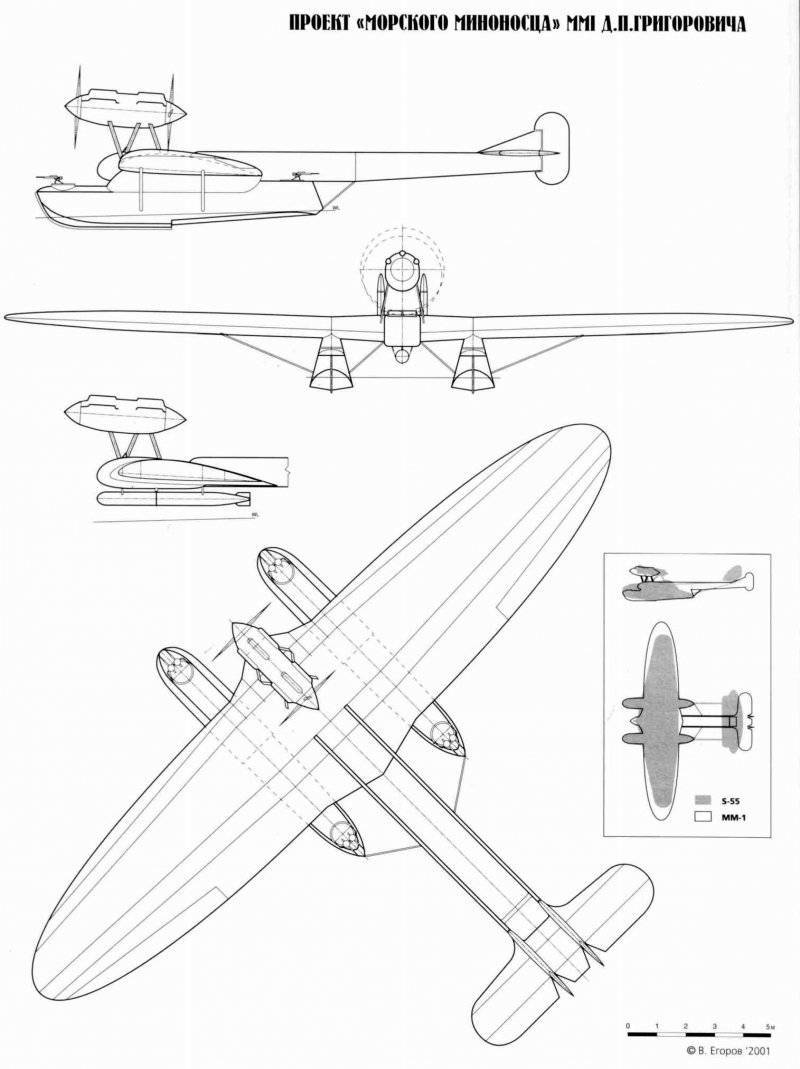
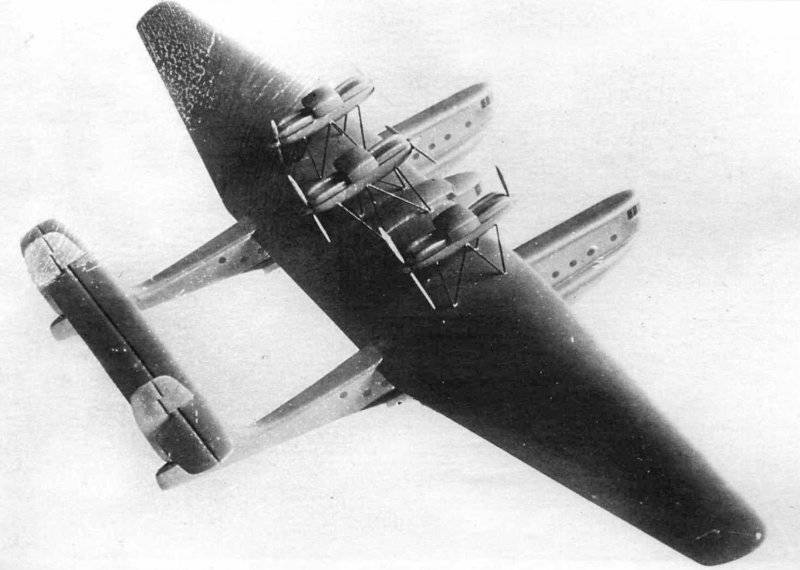
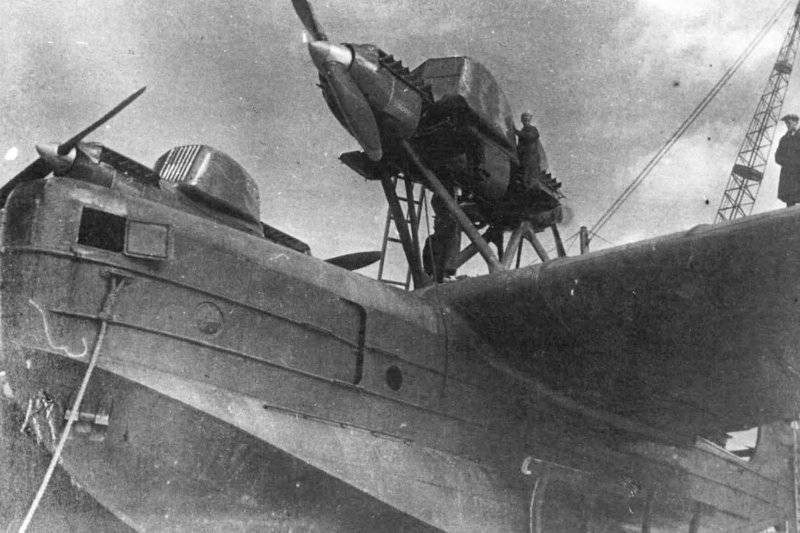
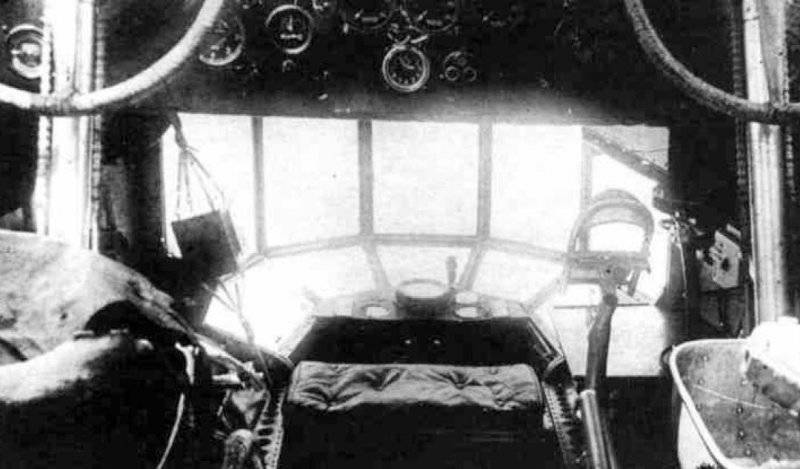
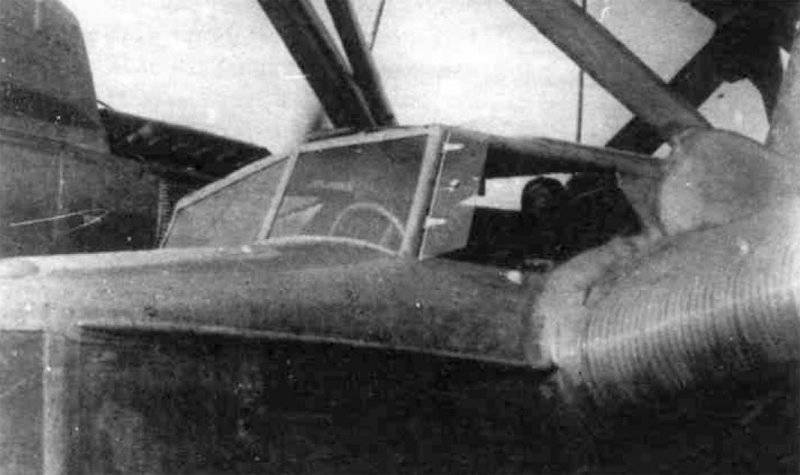
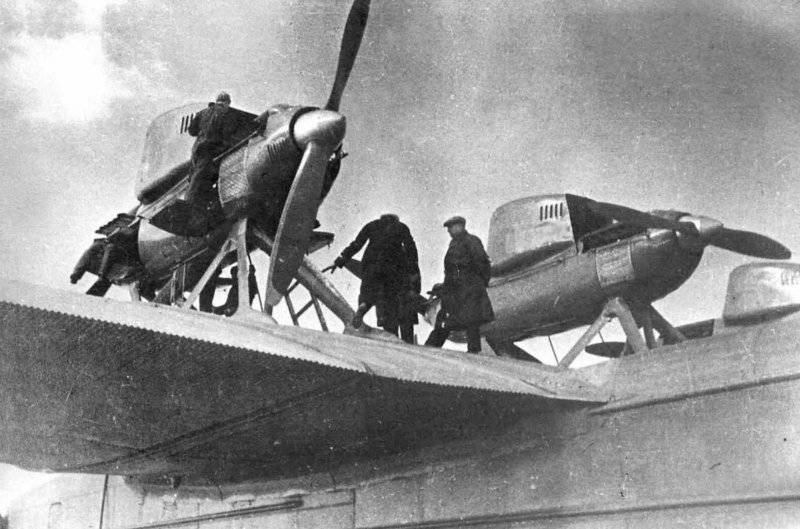
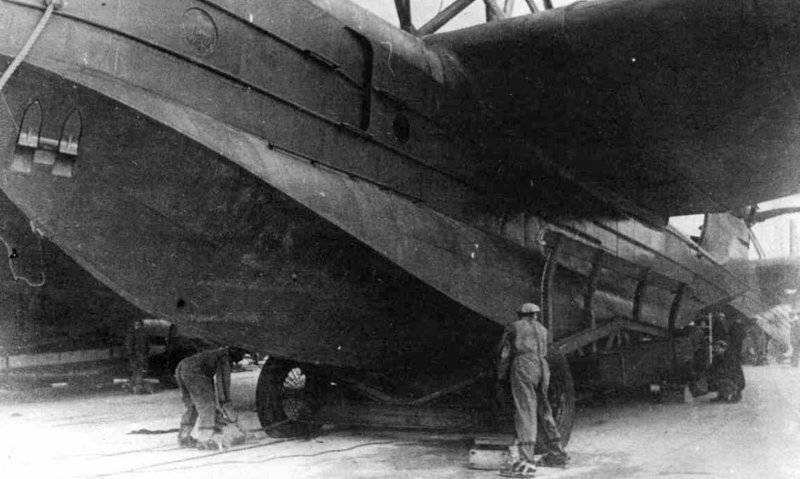
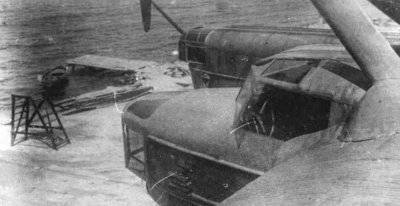
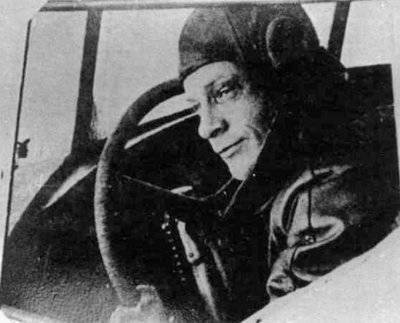
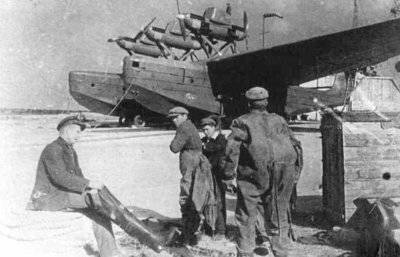
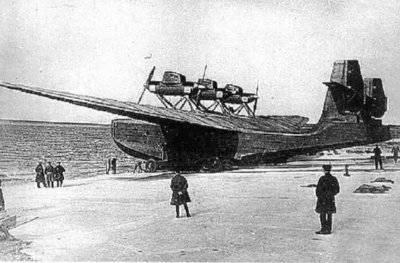
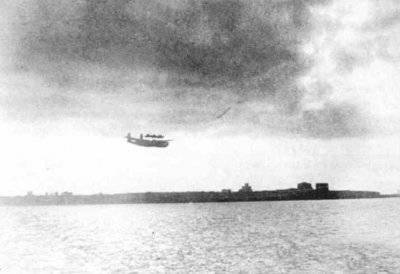
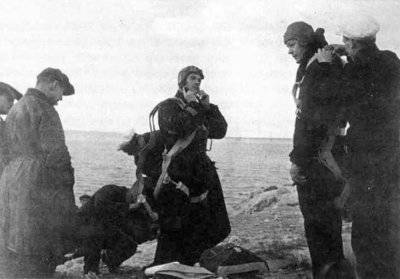
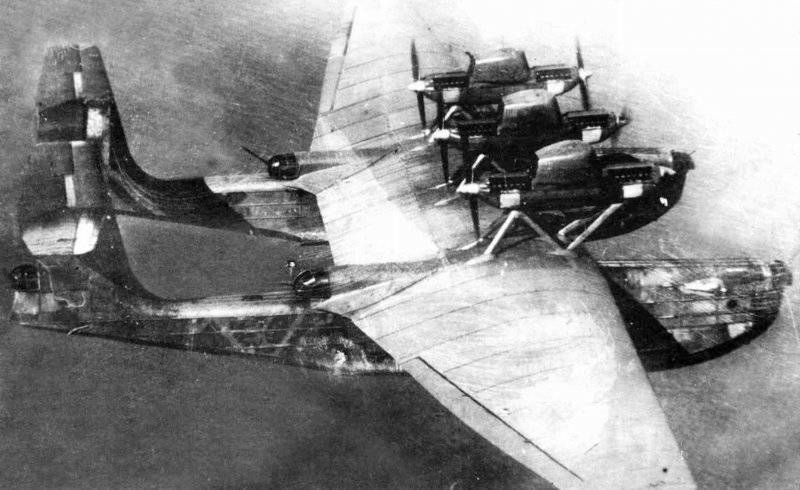

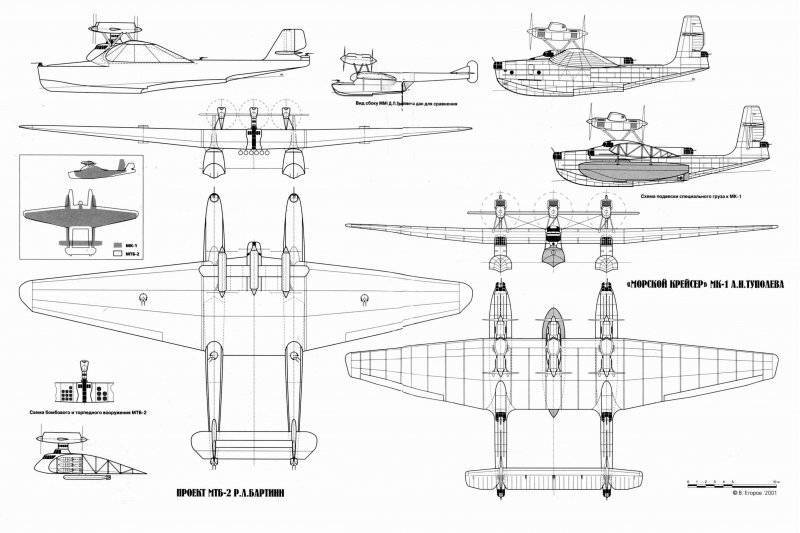
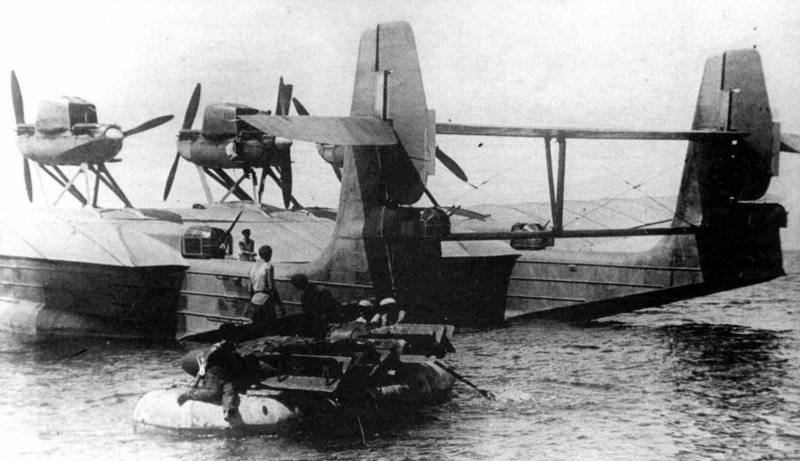
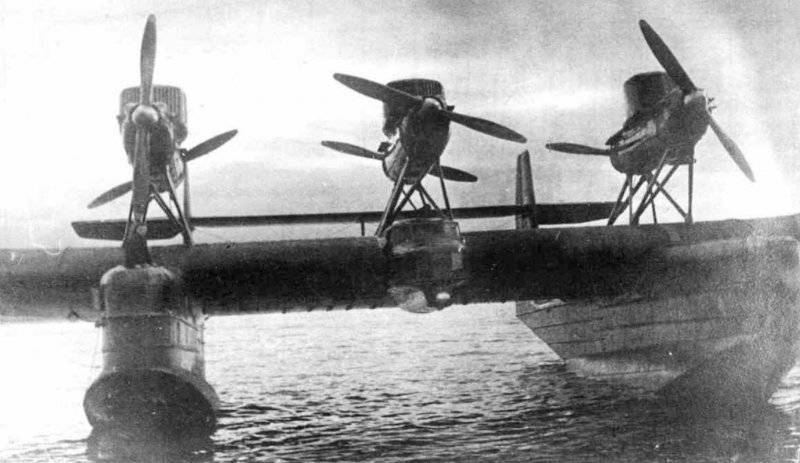
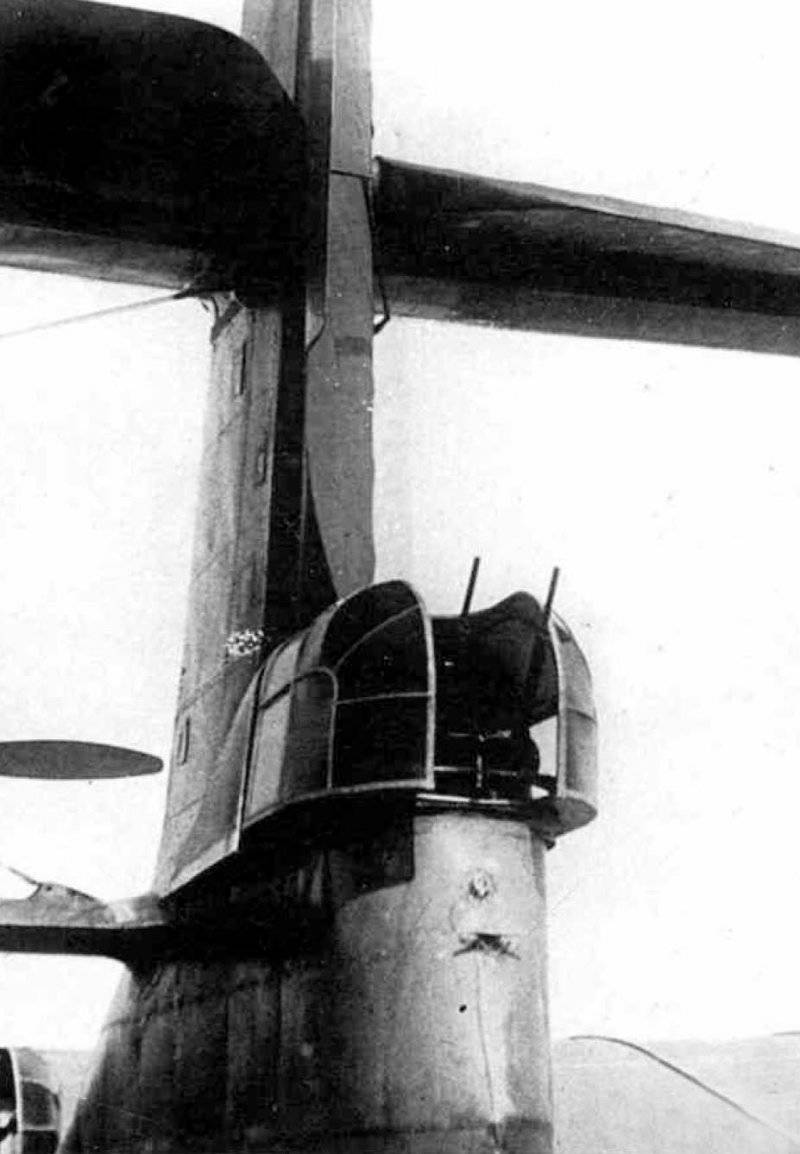
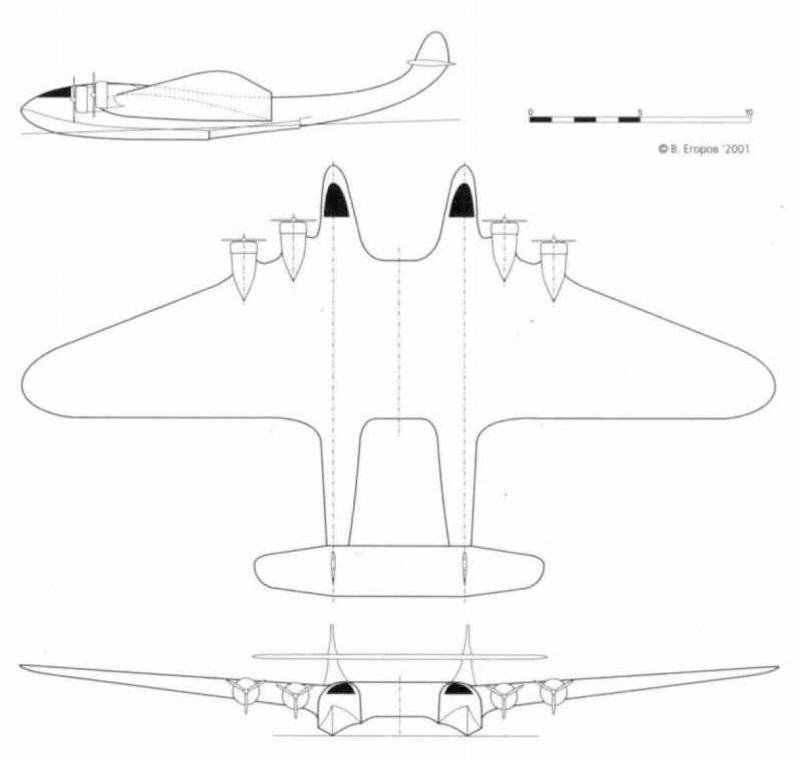
Information